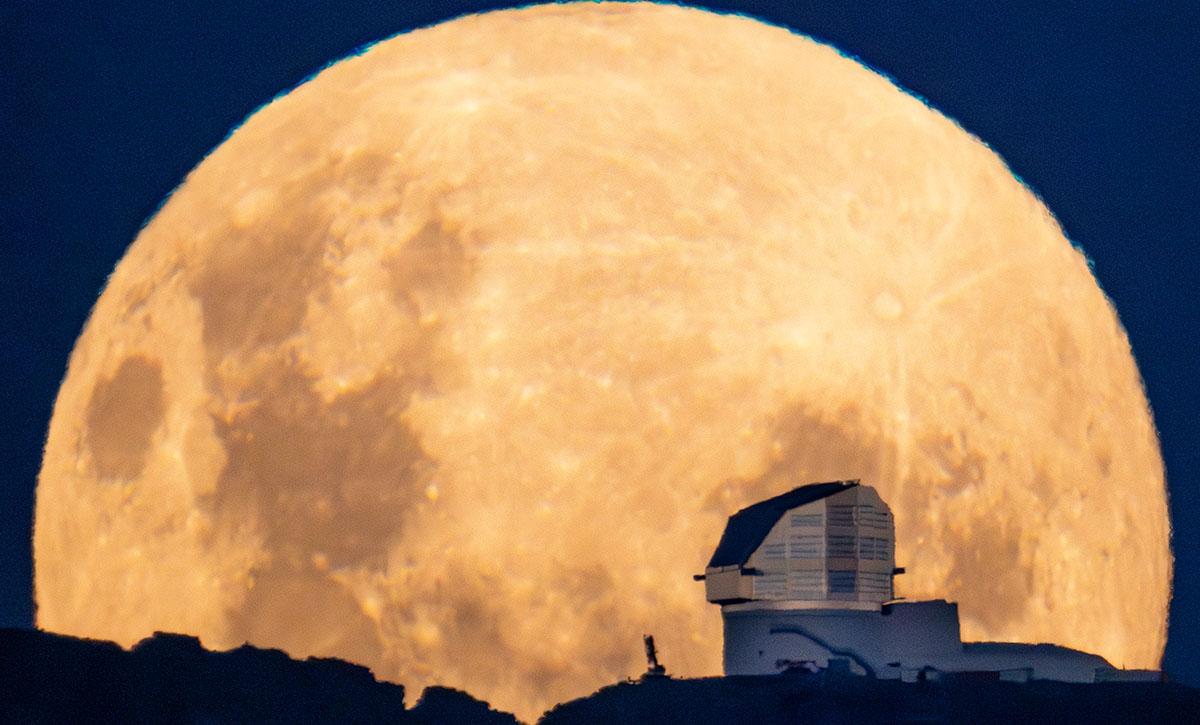Enabling science from the Rubin alert stream with Lasair
20 August 2024
The Vera C Rubin Observatory in Chile is now nearing completion and astronomers are looking forward to the start of the ten-year Legacy Survey of Space and Time (LSST).

In a previous article we described the Lasair community broker, developed by a team from The University of Edinburgh (including staff from EPCC), Queen’s University Belfast, and Oxford University, and some of the science that has been achieved using the precursor ZTF survey.
In a new paper published in RAS Techniques and Instruments the Lasair team describe the kinds of science that the broker will facilitate with the alerts from the Rubin Observatory, some of the downstream projects that will be supported, and the new features and architectural enhancements that will enable this.
Paper: Enabling science from the Rubin alert stream with Lasair
Related article: The Lasair alert broker
Science themes
The science that will be enabled by Lasair can be grouped into a few themes as follows.
Extragalactic transients
Luminous transients outside our own galaxy include supernovae (SNe), kilonovae, tidal disruption events (TDEs), active galactic nucleus (AGN) flare activity, nuclear transients of unknown origin, gamma-ray burst afterglows, stellar mergers, and compact object mergers.
Multi-messenger astronomy
Lasair will receive alerts of gravitational wave events detected by the LIGO/Virgo/KAGRA detectors allowing users to look for potential optical counterparts in the LSST alert stream. In the future this capability will be extended to feeds from other detectors such as gamma-rays and neutrinos.
Massive samples of Supernovae
Lasair will link all transients to a list of likely host galaxies together with their photometric and spectroscopic redshifts. This is valuable both for cosmology and for studies of SN (supernova) explosion physics.
AGN, TDE, and long-lived transients
Lasair will allow users to select known AGN, upload their own AGN catalogues, and select flaring events in both active and passive galaxies. This will support the science of TDEs, changing-look quasars, AGN flares, microlensing of background AGNs by foreground galaxies, and unusual long-lived nuclear transients.
Stellar transients
While most science for variable stars will be achieved with the annual data releases (rather than the real-time alerts), there is a great opportunity in combining alerts with the data releases. Users can discover outbursts or large amplitude variability through the alerts, which link to the data releases and full multi-year light curves.
Partner projects
A key role for Lasair as a community broker is to support a range of downstream projects that will make use of subsets of the Rubin alert stream. The Lasair team is already working with several partners:
TiDES and 4MOST
Two major ESO projects that will provide tens of thousands of spectra for LSST SNe. SN discoveries in Lasair will be coordinated with spectra from the 4MOST multi-fibre spectrometer on the ESO VISTA telescope. This will provide the largest cosmological sample of Type Ia SN, together with a massive statistical sample to understand SN explosion physics.
4MOST: https://www.4most.eu
SoXS
Lasair also works closely with the UK team responsible for building the science software infrastructure for SoXS; a single-shot 0.35–2 μm spectrometer on ESO’s New Technology Telescope.
SoXS: http://www.brera.inaf.it/~campana/SOXS/Son_of_X-Shooter.html
PESSTO
Lasair works with the Public European Southern Observatory Spectroscopic Survey of Transient Objects. It is a public spectroscopic survey that began in 2012, classifying transients from publicly available sources and wide-field surveys, and selecting science targets for detailed spectroscopic and photometric follow-up.
PESSTO: https://www.pessto.org
Zooniverse
Citizen science builds unique and authentic research experiences for the public that directly engage individuals with little or no scientific training or background, thus lowering the barrier for the public to contribute directly to scientific investigations. Lasair already has a strong collaboration with Zooniverse, having established a project to hunt for rare superluminous SNe. This will be broadened, and other projects added, in the LSST era.
Zooniverse: https://www.zooniverse.org
Adler
The LSST will be the largest catalogue of Solar System objects to date, with each planetesimal receiving hundreds of observations across six filters. The Adler system will work closely with Lasair, ingesting the Rubin Solar-system alerts and identifying potentially active sources and unexpected photometric behaviour.
Preparing for operations
As part of the commissioning process, the Vera Rubin Observatory is running a series of increasingly realistic operations rehearsals. These allow processes and procedures to be tested and simulated data to be passed though the processing pipeline. The most recent such rehearsal took place at the end of June and for the first time the community brokers, including Lasair, participated, receiving a stream of approximately 9 million alerts over three nights.
This was the first opportunity to perform an end-to-end test with a data rate approaching that required in operation and with a data schema appropriate to LSST. Generally Lasair performed very well, showing sufficient throughput to keep up with the alert stream despite still being a somewhat sub-scale test and development system. Opportunities for optimisation to further increase performance margin and reduce the overall latency of alerts have been identified. Overall, the team considers the architectural design validated and we are looking forward to being able to serve the first real alerts in late 2025.
Further information
Lasair: A UK Alert Stream Broker: https://lasair.readthedocs.io/en/main
LSST:UK: https://www.lsst.ac.uk
Vera C Rubin Observatory: https://rubinobservatory.org
Image above: Rubin Observatory sits prominently atop Cerro Pachón against the backdrop of the full moon in this photo from March 24, 2024. The photo was taken around 7:55pm in the vicinity of Andacollo, Chile (about 25km from Rubin) after months of planning and patience. Credit: M. Hernandez, H. Stockebrand.

